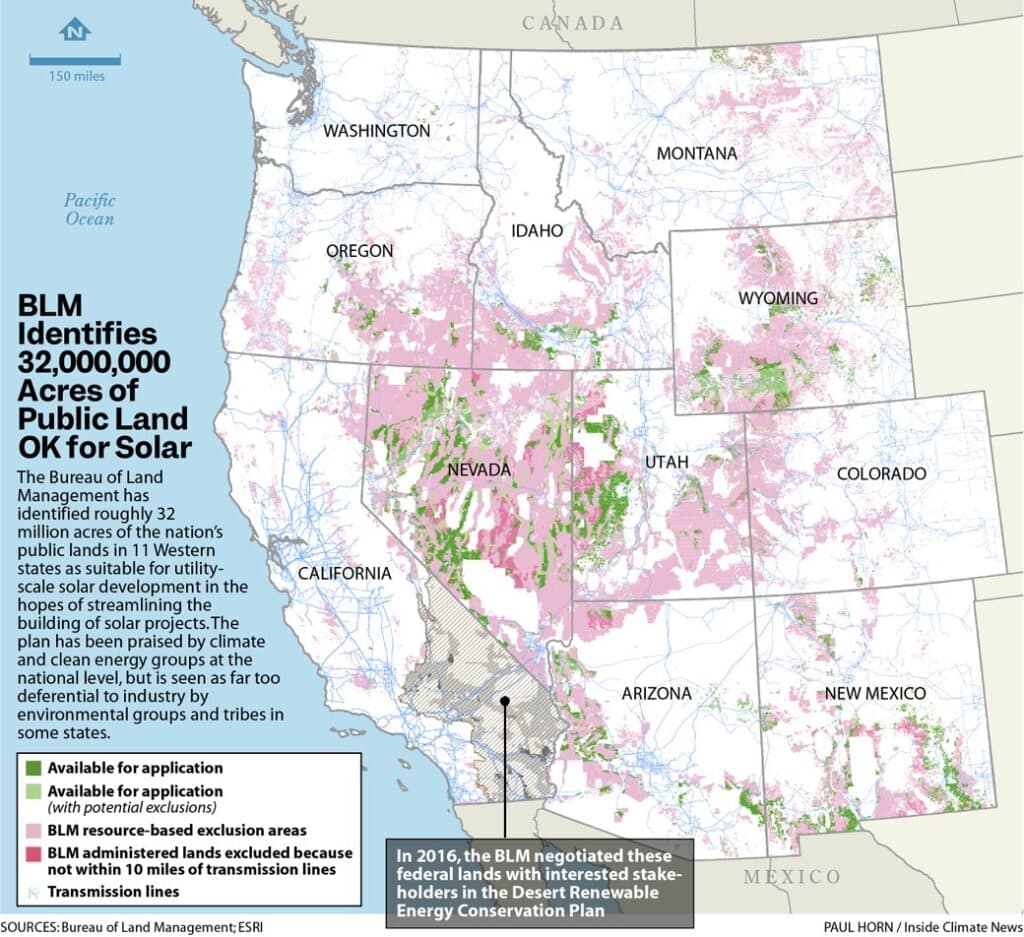It’s past time for a follow-up to Sharon’s post on the BLM’s western solar plan. The final plan was released at the end of August. The BLM says it received 162 formal protests during that 30-day protest period that are being reviewed (but apparently won’t release the names of the parties, unlike the Forest Service objection process).
A number of conservation groups have protested the failure to protect the integrity of the Old Spanish National Historic Trail. Lynn County, Nevada, just southeast of Reno, is concerned the proposed plan will “result in fiscal impacts as it will be left to deal with speculative solar applications in inappropriate areas.” Apparently, the Western Congressional Caucus doesn’t like it because it “risks taking lands offline for purposes other than solar use, limiting the potential for mining, grazing and public access.” And, of course, enviros are unhappy, too.
According to the BLM,
“It would make over 31 million acres of public lands across 11 western states available for potential solar development, driving development closer to transmission lines or on previously disturbed lands and avoiding protected lands, sensitive cultural resources and important wildlife habitat.
Steering project proposals away from areas where they may conflict with other resources or uses will help ensure responsible development, speed the permitting process, and provide greater predictability to the solar energy industry.”
That sounds like good planning. However, a scientist says that, instead, “It makes available to solar areas that are ecologically sensitive, areas that include sensitive species. It stands to significantly impact and alter ecosystems across the Great Basin and Mojave Desert.” The federally threatened desert tortoise is a particular concern.
The Center for Biological Diversity would have opted for an alternative that prioritized already developed or degraded areas on public lands and rooftop solar on structures. There seems to be some debate about whether it is necessary to essentially plow up the desert in order to install solar facilities. But things may be different in Wyoming, where local conservationists see this as additional protection for big game habitat.
And then there’s some “sensitive cultural resources” that got missed.
There are also questions about how responsive the BLM will be to site-specific concerns that arise when more information is available for a proposed project. We have an early example of that with the Rough Hat Clark Solar Project in Nevada. According to E & E news, “The Bureau of Land Management is paving the way for a major solar power project to be built in a valley west of Las Vegas despite the objections of environmental groups that have petitioned the agency to protect the region.”
This is obviously a very large-scale planning effort, where it is not possible to identify more localized issues (though it seems like there was local knowledge that was provided by the public that might have been incorporated). The total acreage “available” is admittedly much greater than what is needed, so presumably further “unavailability” is expected and will be provided as future projects are considered. As a Wyoming representative of the Wilderness Society put it, “The implementation is going to matter.” A final decision is expected by the end of the year.
